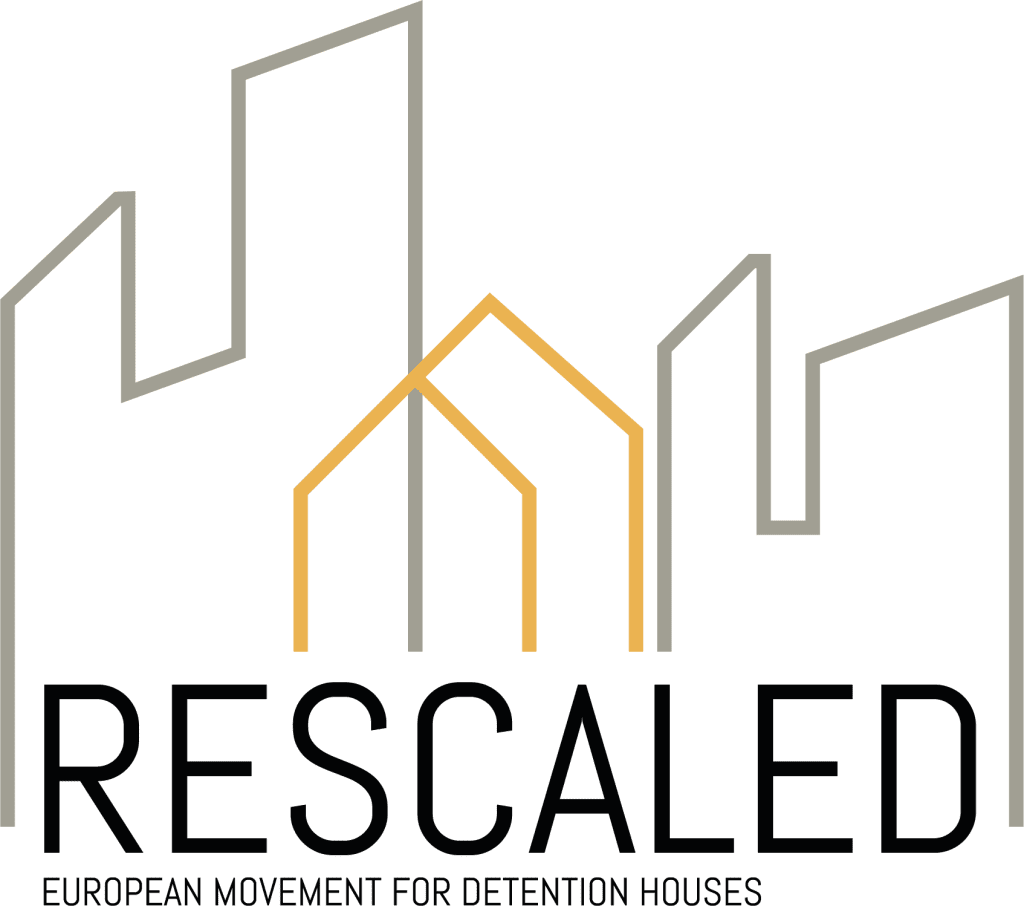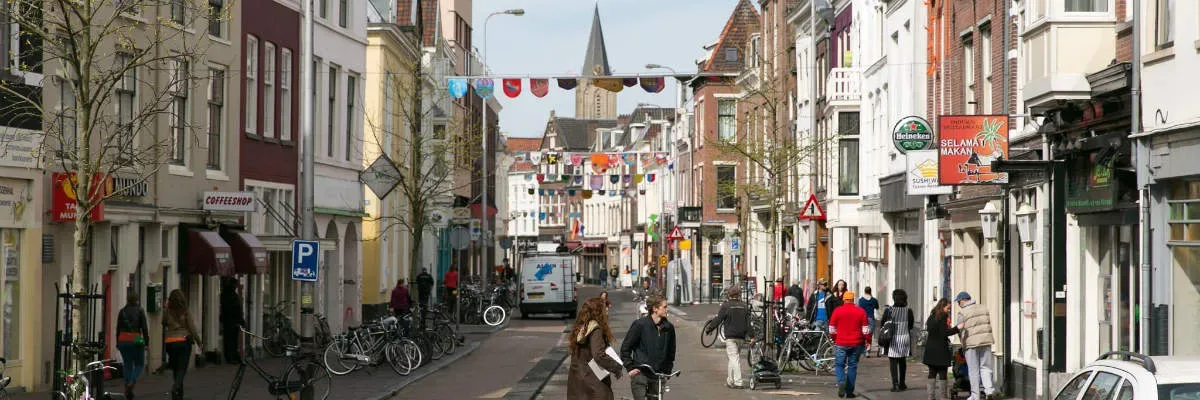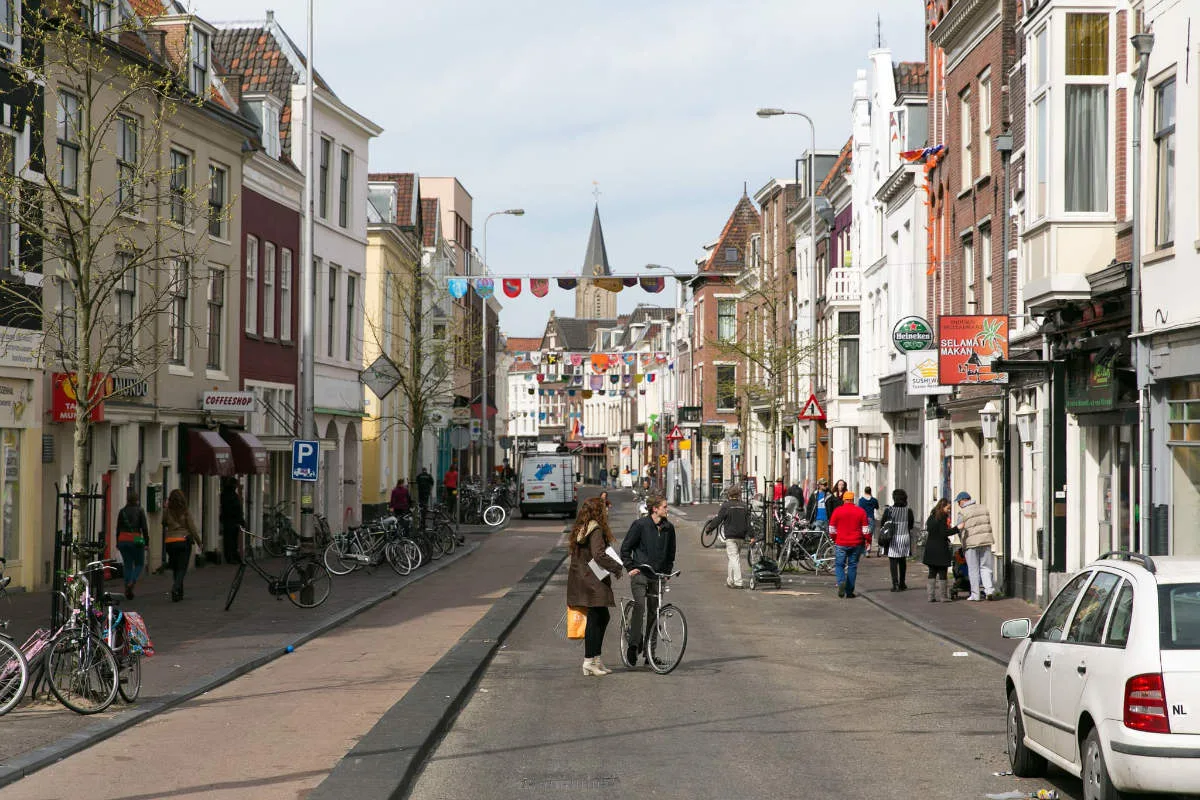The Restorative City concept responds to current social challenges posed by rapid urbanisation, environmental degradation, and the need for more sustainable and livable urban spaces. It aligns with growing awareness of the interconnectedness between the built environment, (social and criminal) justice and the well-being of individuals and communities. These communities reside in resilient urban environments that benefit both people, the planet and prosperity. A restorative city involves a holistic and integrated or even circular approach to justice, consisting of doing justice and undoing injustice, often related to environmental, social, societal, cultural, and economic factors.
In 2023, 2024 and 2025 the Netherlands Office of RESCALED [RJN], together with the local health- and justice sector, will explore the relationship between small-scale detention houses and the dynamic interaction with their local urban, economic and social context.
As early as 2012, the United Nations named Utrecht the first ‘human rights city‘ in the Netherlands. Utrecht received this title because the city had been working for years to translate international agreements on, among other things, poverty and privacy into local policy. For example, Utrecht was the first Dutch municipality where descendants of enslaved people could change their surname, it was the first city with an environmental zone for passenger cars and its local policy led the way in complying with national agreements for allocating social housing to residence permit holders.
In addition to its efforts in various policy areas, Utrecht distinguishes itself by an inclusive and participatory approach to governance. Citizens are actively involved in decision-making processes. This is made possible by citizen participation platforms and forums, which allow residents to make their voices heard and contribute to the development of policies that affect their lives.
As a ‘human rights city’, Utrecht is actively committed to the protection and promotion of universal human rights, and has been working towards peace for generations:
In 1713, agreements were made on the terms to end the War of the Spanish Succession in Europe and Queen Anne’s War in North America. The war had lasted more than a century and a half, and peace was concluded in Utrecht on April 11. However, this was not the first peace treaty in Utrecht. In 1474 the Treaty of Utrecht put an end to a major trade war between Dutch and German members of the International Association of Trading Cities, the Hanseatic League, and the Kingdom of England.
In recent history, Utrecht has been the cradle of the so-called ‘Peaceful School’ and the ‘Peaceful Neighbourhood’. Primary school students are trained to become peer mediators. Together with their teachers, students are working on a peaceful school climate. This has inspired others, leading to the peaceful resolution of conflicts in neighbourhoods becoming increasingly common.
A TRADITION OF RESTORATIVE JUSTICE
When it comes to applying restorative justice, Utrecht has a rich tradition of doing so. As part of the national liveability and safety programme, additional investments will be made in the Overvecht district to increase liveability and safety. This is done by increasing the number of homes, renovating existing homes, and realising social facilities. In addition, poverty and debt are tackled, guidance is provided in finding work, and support is provided to young vulnerable residents. Work is also being done to strengthen the resilience and resistance of the residents.
When it comes to prisons, the city of Utrecht had its own prison from 1856 to 2014: Wolvenplein. It has been given a completely new function, repurposing the existing building through a local initiative: Stadsdorp Wolvenburg. An inclusive neighbourhood with a space for meeting, living, working, food catering and culture. Some activities in the building still refer to its old function, the internal design of the building is preserved and monumental parts of the building are restored as much as possible.
Very recently, Restorative Justice Netherlands (Annemieke Wolthuis and Makiri Mual) took the initiative to organise periodic meetings under the title Restorative Cafés, where the concept of Utrecht as a ‘Restorative City’ is explored and further developed.
WHAT IS A RESTORATIVE CITY?
A “Restorative City” focuses on applying restorative practices and principles to resolve conflict, repair relationships and build a strong, supportive community. A restorative city thereby focuses on restoring relations (micro level), organisational failures (meso level) and system failures (macro level). The idea stems from restorative justice, an approach to conflict that not only focuses on punishment but also on repairing harm, damage and defects.
A restorative city strives to extend this approach beyond the justice system and integrates it into all aspects of society. It aims to find just solutions together with all those involved in redressing injustice that has arisen in the past (in the broadest sense) combined with future-oriented solutions.
SMALL-SCALE DETENTION SHOULD BE PART OF A RESTORATIVE CITY.
An essential aspect of a restorative city is the implementation of small-scale detention houses. Maintaining large-scale prisons within a restorative city implies maintaining a system in which some individuals remain excluded from society. Instead, small-scale detention offers the opportunity to focus on recovery and promote individuals’ integration into society. This approach ensures that detention does not mean permanent separation but rather a temporary phase in which interaction and connection with the community are maintained.
In addition, small-scale detention makes it possible to look deeper into the root causes of criminal behaviour, addressing the underlying issues. So the implementation of small-scale detention facilities in a restorative city will create an environment that promotes recovery and integration. A restorative city dares to invest in understanding its citizens and strive for a society in which detention does not only punish but also restores.
Through the INSPIRE project, Restorative Justice Netherlands aims to refine the concept of a restorative city by identifying key principles, such as dialogue, community involvement, democracy and horizontal relationships, and urban design. In addition, the role of small-scale detention within a restorative city will be further explored and applied to some examples.







